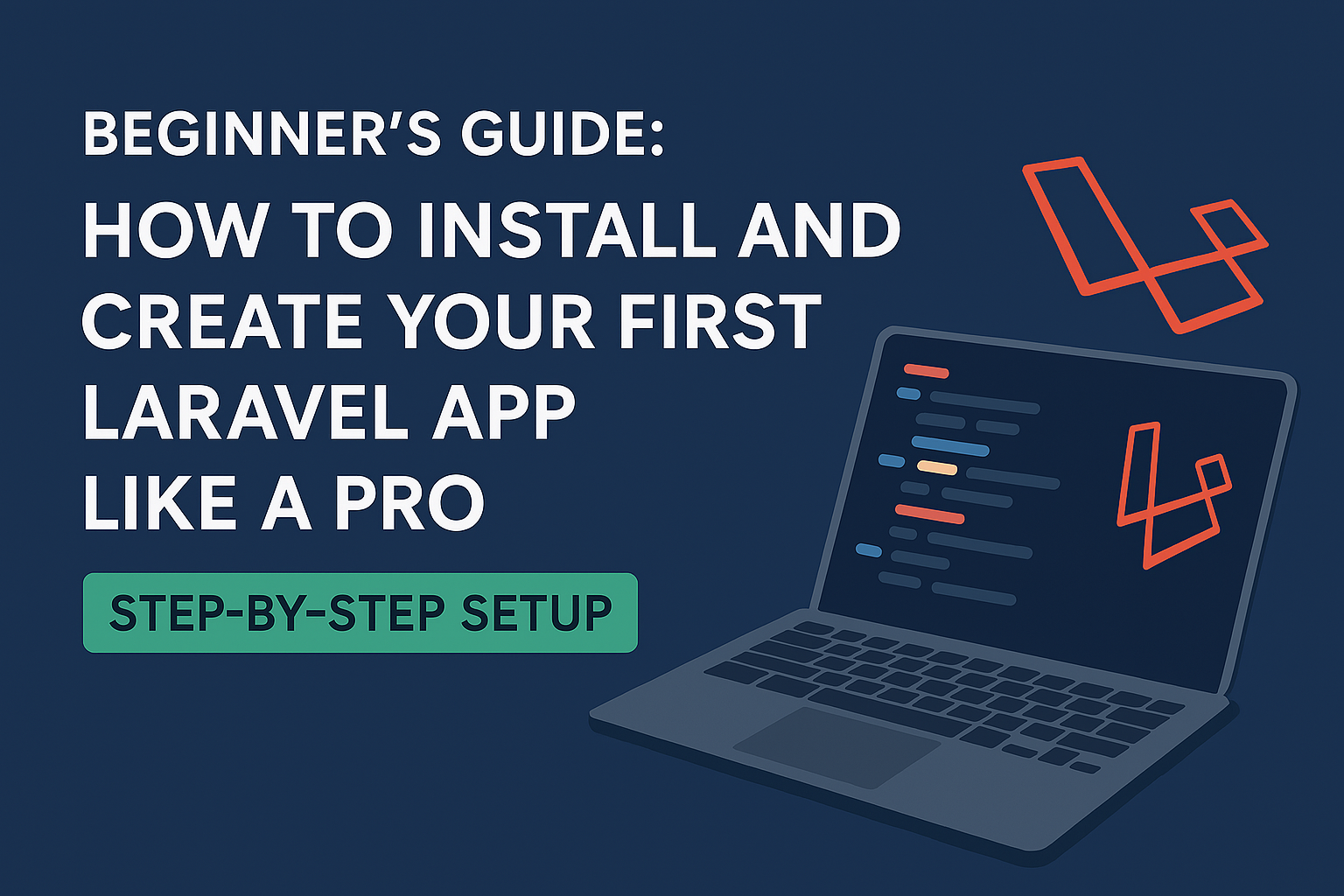If you’re looking to build robust, scalable, and elegant PHP applications, Laravel is one of the best frameworks to start with. This guide will help you set up your Laravel development environment and create your first Laravel app step-by-step – even if you’re just getting started.
🚀 What is Laravel?
Laravel is a powerful open-source PHP framework designed for web artisans. It provides a clean and elegant syntax while offering all the essential tools you need to build modern web applications — routing, ORM, templating, authentication, and more.
Whether you’re a backend developer or just exploring PHP frameworks, Laravel simplifies the development process like no other.
✅ Prerequisites
Before we install Laravel, make sure you have the following tools ready:
- PHP >= 8.1
- Composer (dependency manager for PHP) — Download Composer
- A local development environment like XAMPP, Laragon, MAMP, or Laravel Valet
- MySQL, SQLite, or any supported database
- Optional but recommended: VS Code with PHP and Laravel extensions
🛠️ Step-by-Step: Install Laravel
1. Create a New Laravel Project
Open your terminal and run:
composer create-project --prefer-dist laravel/laravel blog-appThis will install Laravel into a folder named blog-app.
2. Navigate to the Project Directory
cd blog-app3. Set Up Environment File
cp .env.example .envThen generate your application key:
php artisan key:generate4. Configure Database
Edit your .env file with the correct database credentials:
DB_CONNECTION=mysql
DB_HOST=127.0.0.1
DB_PORT=3306
DB_DATABASE=your_db_name
DB_USERNAME=your_username
DB_PASSWORD=your_passwordRun migrations:
php artisan migrate5. Start the Laravel Development Server
php artisan serveYour app will be running at http://localhost:8000
📁 Laravel Project Structure
Here’s a quick overview of key folders in your new Laravel app:
app/– Application logic and core coderoutes/web.php– Web routesresources/views/– Blade template viewspublic/– Public assets and entry pointdatabase/– Migrations and seeders
💡 Create Your First Route and View
1. Add a Route
Edit routes/web.php:
Route::get('/', function () {
return view('welcome');
});2. Customize Your View
Open resources/views/welcome.blade.php and update the content as desired.
🧠 Final Thoughts
You’ve now successfully installed Laravel, created a project, and served your first app locally. 🎉
Laravel’s expressive syntax and rich ecosystem make it a go-to choice for modern PHP development. Stay curious, explore more features like Eloquent, Livewire, Sanctum, and dive into the full power of the Laravel framework.
